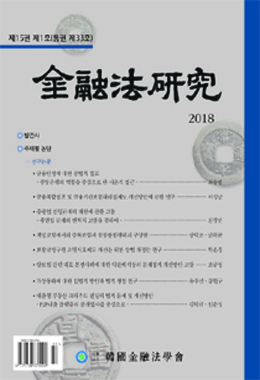기업공개(Initial Public Offering : IPO)로 증권발행을 통하여 자금을 조달하려는 경우에 발행인은 일반 대중에게 광고 또는 선전을 하여 청약을 권유한다. 이때 발행자가 신빙성 없는 정보 전달이나 과대 포장된 정보 심지어 거짓 정보를 제공하는 경우 이를 믿고 증권을 매수한 투자자는 막대한 손해를 입게 된다. 이것을 방지하기 위하여 미국 증권법은 증권발행시 5조에 의한 공모를 원칙으로 하고 예외적으로 4조 또는 Regulation D에 의한 사모를 인정한다. 하지만 사모의 경우에도 SEC통지를 원칙으로 하여 SEC가 사모발행인지 공모발행인지를 파악하게 하며, 발행자의 SEC 통지 서식(Form)에 일정한 정보를 담게 하여 일반 투자자에게 정보제공을 하게 하며, 만일 과대 또는 거짓 정보 제공시에는 이에 대한 책임을 묻고 있다.
일본의 금융상품거래법은 미국 증권법을 계수해 나가고 있는데, 미국 증권법과 달리 모집과 매출을 공모라 하고 사모는 규제대상에서 제외하고 있다. 하지만 사모의 유형은 미국 증권법 Regulation D를 닮아가고 있는 듯 보이고, 적격기관투자자의 개념에 속성요건을 부여하고 그 범위를 확대하고 있다. 또한 사매출의 경우 합산기간을 6개월에서 1개월로 단축하였고, 사매출의 숫자 기준을 사모펀드에 맞추어 500명 미만으로 확대하였다. 나아가 소액모집의 경우에도 1억엔 미만의 경우와 1억엔 이상 5억엔 미만의 경우로 단계를 구분하여 간이등록 기재 내용을 달리하고 있다. 이것은 미국 증권법 Regulation A의 입법형태와 유사하다.
우리 자본시장법상 사모 또는 사매출은 모집과 매출에 해당하지 않는 것으로, 그 기준은 50명 숫자 기준과 기간 합산, 50명 숫자 제외로 전문투자자와 연고자를 명시하고 있을 뿐이다. 우리 사모의 유형은 미국 증권법 Regulation D와 비교하면 단순하다. 따라서 기본 유형으로 ① 금액만을 기준으로 하는 경우, ② 적격투자자만을 대상으로 하는 경우, ③ 적격투자자는 인원수 제한없이 일반투자자는 인원수 제한하에 금액제한이 있는 경우와 없는 경우로 나누어 규정함이 어떨까 생각된다. 나아가 사모제도에도 공모와 같이 금융위원회에 일정한 서식에 의한 통지를 하도록 하고, 적격투자자만을 대상으로 하는 경우 일반권유나 광고를 허용하는 방안 등도 고려해 볼 필요성이 있다. 또한 공모에도 사모와 같이 간이한 등록을 다양화할 필요성이 있다. 현재 소액공모 10억원 미만으로 하는 한 가지 유형에서 10억원 초과 30억원 미만, 30억원 초과 50억원 미만 등 다단계로 나누어 간이한 등록내용과 정보공시를 달리하도록 하는 방법도 강구해 볼 필요성이 있다. 또한 우리 사매출의 합산기간은 6개월로 하고 있는데, 49명에게 매도한 후 매수한 자가 취소한 경우 6개월이란 기간을 기다려야 사매출로 인정받는 불합리가 발생한다. 매출의 경우에는 취소를 고려하여 1개월로 단축하는 것이 바람직하다.
The purpose of this paper is to compare the private placements of the US, Japan, and Korea, and to study ways to improve the private placements system in Korea.
Absent an available exemption, the Securities Act of 1933 of USA require that offers and sales of securities be registered with the Securities and Exchange commission (SEC). Registration is intended to provide investors with full and fair disclosure of material information so that they are able to make own investment decisions. However, the Securities Act contains a number of exemptions to its registration requirements. The exemptions in Regulation D are the most widely used transactional exemptions for securities offerings by issuers.
Financial Investment Services and Capital Markets Act of Korea (FISCM Act) was modeled after the Financial Instruments and Exchange Act (FIE Act) of Japan. In the FIE Act, Public offering securities means solicitations of an application of at least 50 investors to acquire newly issued securities and secondary distribution of securities means solicitations of an application to sell or purchase already-issued security. Privates placement means a solicitation for acquisition which does not come within the purview of public offering of securities. Solicitation for acquisition which is made only to qualified institutional investors are the private placement, too.
Under the FISCM Act of Korea, the distinction between public offering and private placements are basically similar to the FIE. However, the concept and scope of qualified institutional investors in private placements are different, and the number of people in secondary distribution of securities is different.
I would like to propose three type of private placements like Securities Act of Regulation D. The frist type is the aggregate offerings price which is not exceed §5 million during any twelve-month period. This offering is registered under FISCM requiring public filing and delivery of a substantive disclosure document before sale. The second type is that the number of non-accredited purchasers is limited fifty plus an unlimited number of accredited investor. If any of the purchasers are not accredited, then specified disclosure must be made to all non-accredited purchasers. The issuer may raise up to $5 million during any twelve-month period. The third type is no limit to the aggregate price of the securities offered. But the number of non-accredited purchasers is limited to fifty. Finally, Accredited investor should include not only certain institutional investors but also fat cat individual investors.


